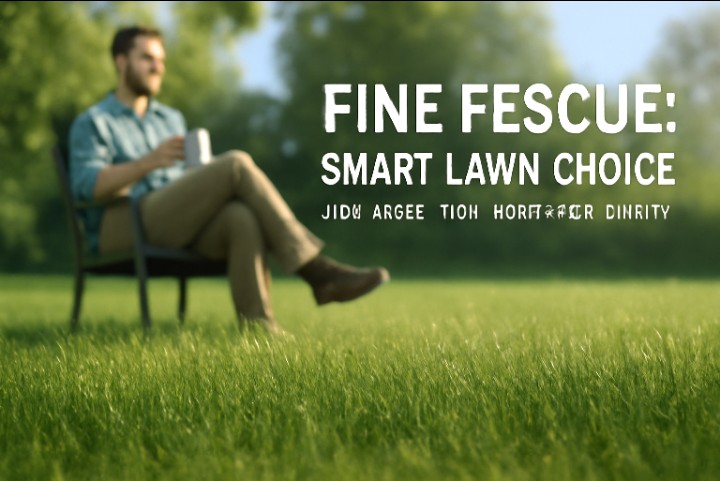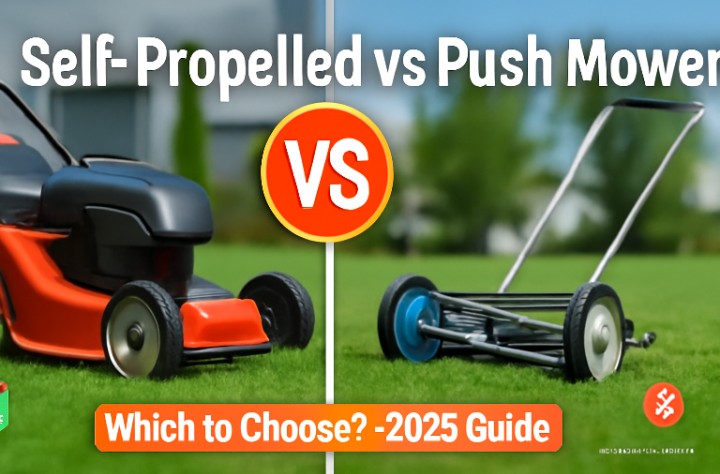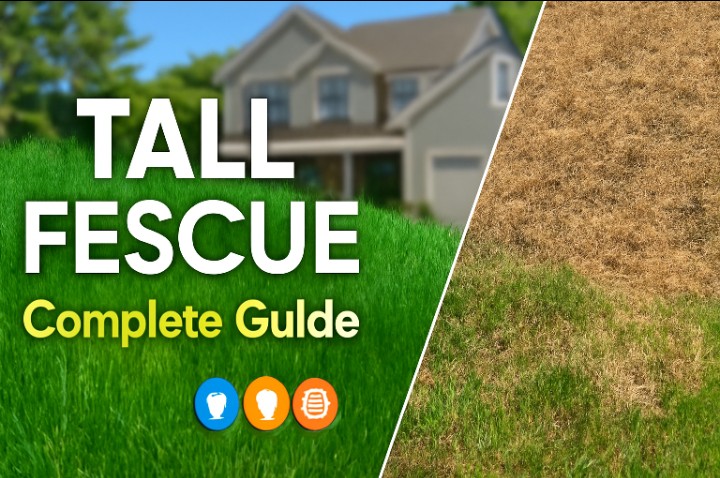Ugh, those bare spots again! Every time you step outside, there they are – mocking you like little patches of lawn shame. You have tried ignoring them, hoping they will magically disappear. Spoiler alert they won’t.
But here is the thing – I have been there too. Staring at my yard thinking, “Why does everyone else’s lawn look like a golf course while mine looks like it has the chicken pox?”
Good news though, fixing these annoying patches is way easier than you think. No fancy degree required, just some common sense and elbow grease.
Understanding Bare Spots vs Brown Spots
Okay, first things first. Not all lawn disasters are created equal and mixing them up is like treating a headache with band-aids.
Bare spots? That’s when your grass has completely ghosted you. Vanished. Gone. You are staring at dirt like it’s some kind of sad backyard crop circle. This usually happens when the soil gets packed tighter than a subway car or there is so much dead grass piled up that nothing new can break through.
Brown spots are the drama queens of lawn problems. The grass is still hanging around but it looks absolutely miserable. Could be from dumping too much fertilizer (yeah, more is not always better), water standing around like a lazy puddle or some nasty disease crashing the party.
Why should you care about the difference? Because trying to fix rock-hard soil with just fertilizer is like trying to fix a flat tire with air freshener. Sounds logical until you actually think about it.
Common Causes of Bare Spots
Physical Damage
Let’s be real about the biggest culprit here: everyone’s feet. Your kids treating the backyard like their personal soccer stadium. Bella the golden retriever doing her daily sprint to the back fence. Dad taking the same shortcut to the garage for the past five years.
All this trampling turns your soil into something resembling a concrete parking lot. Grass roots trying to grow in compacted soil is like trying to push through a brick wall with a plastic spoon.
Then there is the “oops” moments. Little Timmy’s inflatable pool sat in the same spot for two months last summer. The garden hose got left in a coil during that heat wave in August. Mom accidentally tipped over the fertilizer spreader right after filling it up.
These accidents happen to everyone but grass does not forgive easily. Block its sunlight or dump chemicals on it and you are looking at instant lawn death.
Weather plays favorites too. Those brutal Western droughts we love so much? They pick off the weakest grass first. Shady spots under your maple tree struggle because grass is basically solar-powered, and shadows don’t pay the bills.
Pest and Disease Issues
Here is something nobody talks about at neighborhood barbecues: your lawn has enemies.
Grubs are like tiny underground monsters throwing a rave in your root zone. They spend spring and summer having an all-you-can-eat buffet on grass roots. You won’t see the party but you hell definitely see the hangover they leave behind.
Chinch bugs are sneakier. These microscopic vampires suck the life out of grass blades one drop at a time. First your lawn turns yellow like it needs more coffee. Then brown like it’s given up on life. Then poof – gone.
Disease problems love our Western weather patterns like teenagers love drama. Brown Patch shows up uninvited when humidity rises. Dollar Spot creates these perfect circles of death that spread like gossip in a small town. Summer Patch waits for the hottest days to make your life miserable.
Soil Problems
Sometimes the real problem is hiding underground where you can not see it.
Compacted soil is public enemy number one. Doesn not matter if it happened during construction, from heavy foot traffic or because Mother Nature blessed you with clay soil. The result is the same roots can’t penetrate, water can’t soak in and grass gives up trying.
Water drama comes in two flavors: too much or too little. Overwatering drowns roots like they are in a swimming pool. Underwatering leaves them high and dry like plants in a desert. Both scenarios end with the same tragic result.
Then there is the mystery nutrient problems. Your soil might be missing something crucial, like iron or nitrogen or proper pH balance. Without testing you are basically playing lawn roulette with expensive grass seed.
Essential Pre-Repair Steps
Soil Testing (Critical First Step)
Listen, I’m going to sound like a broken record here but test your darn soil first. I don’t care if your neighbor’s cousin’s friend said just throw some seeds down and pray.
Getting a real lab test is like having a GPS for your lawn problems. It tells you exactly what’s broken and exactly how to fix it. No guessing, no wishful thinking, no buying random products at the garden center hoping something works.
Most folks skip this step because it feels like extra work. Then they wonder why attempt number four at fixing the same spot fails spectacularly. The test costs about the same as one bag of premium grass seed but it saves you from buying the wrong stuff repeatedly.
Area Preparation
Time to channel your inner construction worker because this gets messy.
Strip out everything dead, dying or just plain ugly. Dead grass, weeds, last fall’s leaves that somehow survived winter – all of it goes. Think of it as giving your new grass a clean slate instead of a cluttered mess to work with.
Grab whatever soil-loosening tool you can find. Garden fork, small rented tiller, even a sturdy rake if that’s all you have got. Dig down about 2-3 inches and break up that hard-packed earth. Your new seeds need soil they can actually sink into not bounce off of.
Now comes the custom treatment based on your soil test results. Maybe you need compost to loosen things up. Maybe specific fertilizers to fix whatever nutrients went missing. Follow those lab recommendations like they’re a recipe for your grandmother’s famous cookies.
Repair Methods: Seed vs Sod
Seeding (Cost-Effective Option)
Seeding is the budget-friendly route that requires patience. We are talking 6+ weeks minimum before you can properly judge results. Think of it like growing your own vegetables instead of buying them pre-made.
Fall seeding works best in most Western cities. Cooler temps, more reliable rain, less brutal sun beating down on baby grass. Nature actually helps instead of fighting you.
Spread seeds like you are seasoning a giant outdoor meal. Even coverage, no heavy spots, no bare patches. A gentle rake helps seeds nestle down without burying them alive.
Sodding (Instant Results)
Want satisfaction now? Sod delivers instant lawn gratification. Fresh grass with roots attached, ready to transform your problem spots immediately.
But instant comes with a price tag. Sod costs serious money and you absolutely cannot phone in the aftercare. Those first 2-3 weeks require religious watering attention. Miss a few sessions and your investment becomes expensive compost.
This is like buying a new car versus fixing your old one. More money upfront but you drive off the lot immediately.
Grass Plugs (For Specific Varieties)
Some grass types prefer the plug treatment over traditional seeding. Zoysia and St. Augustine are perfect examples – they establish better this way.
Think of plugs as grass starter kits. Small squares of established sod that spread naturally over time to fill bare areas. Slower than full sodding, cheaper than covering everything, better establishment than plain seeding.
Space them 6-12 inches apart like you are planting a checkerboard pattern. They will grow toward each other and eventually create seamless coverage.
Pro move: get an auger bit for your drill. Turns plug installation from backbreaking manual labor into a simple point-and-drill operation. Any standard household drill works – just attach the bit and go.
Step-by-Step Reseeding Process
Seed Application
Showtime! Spread those seeds like you are feeding hungry birds at the park. Even coverage is everything – don’t dump half the bag in one corner and leave the rest sparse.
Light raking afterward helps seeds settle into soil contact. They need to touch dirt to germinate but don’t bury them like you are planting vegetables. Most grass varieties prefer shallow planting.
Watering Schedule
This timeline is not negotiable. Mess it up and you are starting over.
Week 1:
Twice daily watering sessions are mandatory. Hit it before 11 AM while it is still cool, then again after 7 PM when temperatures drop. Each session runs about 10 minutes.
Keep soil consistently damp like a wrung-out sponge. Not muddy, not dry, just nicely moist.
Week 2:
Switch to once daily morning watering. Check moisture by poking the soil with your finger. Should feel damp but not soggy.
Overwatering kills seedlings just as dead as drought. New grass is picky about its water schedule.
Week 3+:
Cut back to three-times-weekly watering once you see green sprouts appearing. This forces roots to grow deeper hunting for water, making your grass tougher long-term.
Stick with this schedule until new grass matches your existing lawn height.
Post-Planting Care
Traffic Management
Stay completely off newly seeded areas. I know you want to peek at progress every day but resist the urge. Even gentle footsteps can damage fragile roots trying to establish.
Set up barriers, rope off areas or just yell at anyone who gets close. Make it clear these spots are temporarily off-limits to humans, pets and nosy neighbors.
Only resume normal traffic when new grass reaches the same height as surrounding turf. That’s your green light for celebration.
Maintenance
First mowing is a milestone moment. Wait until new grass matches existing lawn height before firing up the mower.
Sharp blades are crucial here. Dull mower blades can yank up seedlings that have not developed strong root systems yet. Get them professionally sharpened if needed.
Set cutting height slightly higher than normal for initial mows. This reduces stress while grass continues establishing its root network.
Keep following your soil test fertilizer recommendations. Healthy grass naturally fights off pests and recovers faster when weather gets nasty.






